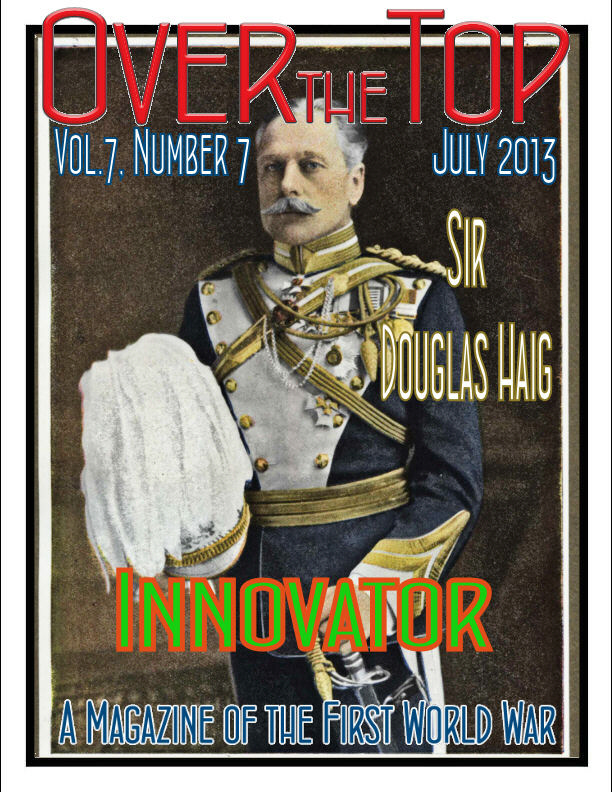
July 2013 |
 |
|


Our new blog, Roads to the Great War, is off and running and we have had a great response. Remember that it has many new items that simply can't fit into the new Trip-Wire with our emphasis on the war's centennial. We need to continue building up its traffic to feed the search engines and attract new readers. Please click on the icon below, and, if you like what you see, subscribe. Beginning on 1 July we are going to spend a week revisiting the 1916 Battle of the Somme.
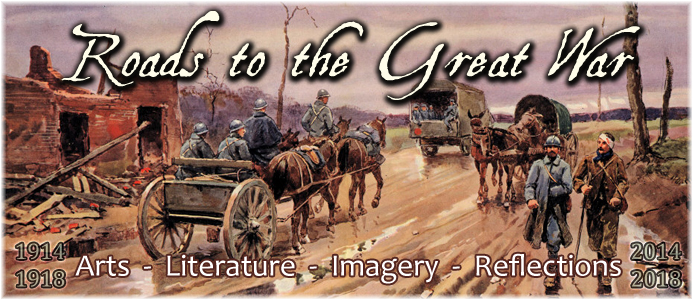
One other bit of news. I've completed the plans for our 2014 WW1 Centennial expeditions: the Opening Moves in the spring and an in-depth look at the Miracle of the Marne on the anniversary of the great battle. See the Battlefield Tours section below, where you can download the details on both trips. MH

|
2013
 Golden Age Air Museum, "WW1 Wings and Wheels Event," 13-14 July 2013, Grimes Airport Bethel, PA. Website Golden Age Air Museum, "WW1 Wings and Wheels Event," 13-14 July 2013, Grimes Airport Bethel, PA. Website
 The National World War I Museum in Kansas City, MO, has a current exhibit running on "The Road to War," running through April 2014. Website The National World War I Museum in Kansas City, MO, has a current exhibit running on "The Road to War," running through April 2014. Website
 The MacArthur Memorial and Museum in Norfolk, Virginia, has a current exhibit running on "The 42nd 'Rainbow' Division in World War One," running through September 2014. Website The MacArthur Memorial and Museum in Norfolk, Virginia, has a current exhibit running on "The 42nd 'Rainbow' Division in World War One," running through September 2014. Website
2014
 The U.S. Air Force National Museum at Wright-Patterson AFB, Ohio and the League of WWI Aviation Historians (OvertheFront.com), are collaborating on what will be the first U.S. based mega-event for the WWI centennial. The League is scheduling its 2014 Seminar to correspond with the WWI Dawn Patrol Fly-In at the Museum in Dayton, OH, 24-28 September 2014. Mark it down on your calendar. The U.S. Air Force National Museum at Wright-Patterson AFB, Ohio and the League of WWI Aviation Historians (OvertheFront.com), are collaborating on what will be the first U.S. based mega-event for the WWI centennial. The League is scheduling its 2014 Seminar to correspond with the WWI Dawn Patrol Fly-In at the Museum in Dayton, OH, 24-28 September 2014. Mark it down on your calendar.
|

The Royal Navy by [Tirpitz] analysis, had been accustomed since Trafalgar to go where it chose and do what it would across the watery globe. If a German navy could threaten, even at heavy cost to itself, such losses to the Royal Navy that its ability to confront one of its other naval rivals — France, Russia, the United States — was thereby compromised, it would shrink from the challenge. In doing so it would concede to Germany a freedom of action of its own in international politics and thereby open the way for Berlin to move from great power (Grossmacht) to world power (Weltmacht) status. Tripitz's analysis was persuasive.
John Keegan, The Price of Admiralty
|
Reims — La Basilique en Flammes
by Maurice Romberg
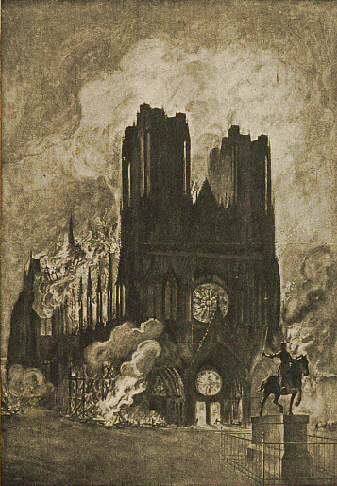
From: La Panorama de la Guerre, 1914

Wizards of the Air: The Great War's Aircraft Designers
The Great War provided the impetus for astonishing advances in aviation. The story is well known and fully accepted. Part of that saga is about the intellectual effort that made all the progress possible. Coming to the forefront when their nations needed them were the engineers, innovators, entrepreneurs, or amateur aviators, who were already designing airplanes. Almost all of them were civilians, but they became major contributors to the war and to the future of aviation.
 Anthony Fokker
Anthony Fokker
 Hugo Junkers
Hugo Junkers
 Louis Béchereau of SPAD
Louis Béchereau of SPAD
 Geoffrey de Havilland
Geoffrey de Havilland
 Thomas Sopwith 1984 Interview (YouTube Video)
Thomas Sopwith 1984 Interview (YouTube Video)
 Gianni Caproni
Gianni Caproni
 Igor Sikorsky
Igor Sikorsky

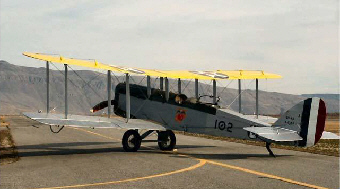
The War's Fastest Operational Aircraft
Now, which of the wizards listed above produced the fastest airplane of all? The somewhat surprising winner of the WWI Air Speed Derby is Geoffrey de Havilland's DH-4, which was classed as a "day-time bomber." The double seater's later models (a postwar USMC version is shown above), equipped with the 400-horsepower American Liberty engine, had a maximum speed of 143 mph. Speedier planes were coming off production lines at the war's end, but none saw major action like the DH-4.
Source: (Militaryfactory.com)
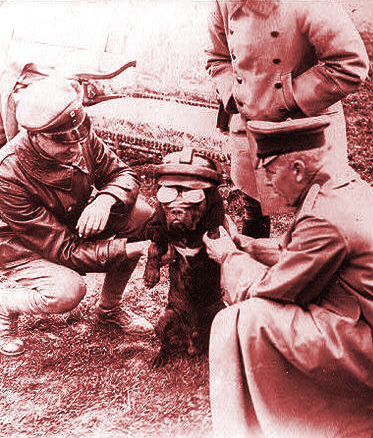
Although It Is Overused, the Only
Word to
Describe Richtofen's Dog
Moritz Is "Cool"
|

|

Organizations & Resources

worldwar-1centennial.org/
|
The St. Mihiel Trip-Wire continues this month with our effort to acquaint the readers with those organizations and individuals on the front line of America's effort to remember the sacrifices made 100 years ago. We will begin our introduction of the nation's new National Centennial Commission and welcome two new organizations to our list of key resources. MH
The World War 1 Centennial Commemoration Commission
The World War I Centennial Commission Act, passed by Congress and signed by the President on 16 January 2013 established a new commission responsible for planning, developing, and executing all the nation's activities commemorating the centennial of World War I. The act directed that the 12 commissioners be seated by 16 March 2013. Thus far, only seven of the twelve Commissioners have been appointed, slowing the start-up somewhat. The sitting members, however, are already exploring and sorting out a number of potential projects to encourage, like a documentary series similar to Band of Brothers, reactivating the 369th Harlem Hellfighter Band, restoration and rededication of the all of America's WWI monuments, commemorative stamps and coins, ceremonies in conjunction with sporting events, and on and on. Naturally, priority one is finding funding to support all these programs.
Over the next several months, we will begin our ongoing coverage of the commission's work by introducing its members. Here are the first two members we would like you to meet:

Jerry L. Hester
|
Jerry L. Hester of North Carolina, formerly chairman of the 70th Anniversary WWI National Committee, was the first commissioner appointed and has been elected by his fellow members acting chairman. He is a former U.S. Air Force Officer, and later served in the defense industry as president of his own firm, Interdyne Corporation.
Jerry's interest in World War I began in his early childhood during the age of early flights in open bi-wing aircraft and Ford Tri-motors that offered a thrilling ride for $3. A lost chapter of the war's history was filled when a neighbor described World War I as he had experienced it in the infantry. Visits to the local library and war monuments served as catalyst to seek more information over the years. After ten trips to the World War I battlefields in France and Flanders, WWI and its aviation became the special focus in Jerry's recent years of study and research.

Thomas Moe
|
Commissioner Colonel Thomas Moe, USAF (Ret.), is currently director of the Ohio Department of Veterans Services. He graduated in 1965 from Capital University earning a regular commission in the U.S. Air Force. During the Vietnam War he flew 85 combat missions in the F-4 aircraft, including 65 over North Vietnam. He became a POW in January 1968 and was held in the POW camp known as the Hanoi Hilton. He was not released until March 1973. After returning to flying, he piloted the F-16 and other fighters while completing his Air Force career. In May 2013 he was inducted into the Ohio Military Hall of Fame for Valor.
After retirement from the Air Force, Tom made a new career in education and public service. Before his current position, he was chairman of the Department of Aerospace Studies and a Military Studies Fellow at the Kroc Peace Institute at University of Notre Dame, as well as Director of the Fairfield County, Ohio, Office of Emergency Management and Homeland Security.
The Centennial Community Continues to Grow
On the left are two new icons and links for organizations that will be making major contributions to our national remembrance of the Great War. We will be highlighting their efforts in future issues of the Trip-Wire, but please check out their excellent websites soon.
Under their website's "Turning Points" section, the Wisconsin Historical Society has developed an outstanding resource titled World War I, at Home and in the Trenches. It has already gathered over 40 major articles, e-books, images, and links to portals on the war. It is especially strong on the home front, and I would recommend it especially to both young people and specialists who have a project on that topic.
West Point graduate Lillian Pfluke has had a mission since 2008. Her organization, American War Memorials Overseas, works ceaselessly to document, promote, and preserve nongovernmental-supported War Memorials honoring Americans outside of the USA to ensure those monuments remain part of local communities forever. Of over 1,000 U.S. memorials in foreign lands, only 22 are officially maintained by our government. When you visit this website be sure to view the remarkable database that Lillian's staff and volunteers have gathered, documenting the overseas memorials. The World War I section is amazing. Also, there is a donor's page, if you would like to help the cause.
Memorials to a Forgotten American Battle
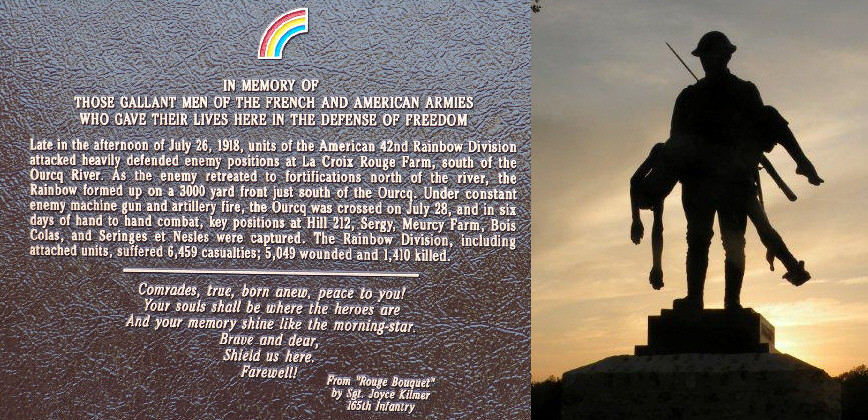
On 26 July 1918 the 42nd "Rainbow" Division made a major assault along the Ourcq River, north of Château-Thierry. The victory in the Battle of the Ourcq was extremely costly for the division, which suffered 6,500 casualties, including over 1,400 killed. The divisional plaque on the left is mounted at Meurcy Farm, near the American cemetery at Fère-en-Tardenois. It was the site of fighting by the 165th Infantry (Fighting 69th). The monument on the right is at Croix Rouge Farm, captured by the division's 167th Infantry Regiment from the Alabama National Guard in fierce fighting.
|

theworldwar.org/
|
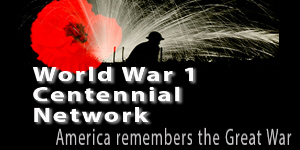
www.ww1-centennial.org/
|

history.army.mil/
|

www.firstdivisionmuseum.org/
|

www.abmc.gov/
|
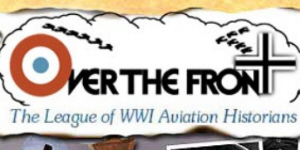
www.overthefront.com/
|

www.nationalmuseum.af.mil/
|
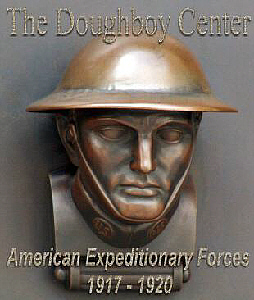
www.worldwar1.com/dbc/
|

wwi-inventory.org/
|

wisconsinhistory.org/
|

www.uswarmemorials.org/
|
|

Summer 1913
The Second Balkan War
Successes by the Balkan allies against the Ottomans in the 1912 war generated a coup d'état in Istanbul, and the new government broke off the negotiations and renewed hostile actions in mid-January 1913. The second phase of the war lasted for nearly three months. The Ottoman counterattacks in eastern Thrace were driven back by the Bulgarian army; the Montenegrin army took the fortress of Shkodra, the Greek army took the fortress of Ioannina, and the Bulgarian army took Adrianople. The peace negotiations in London were renewed and on 17 May 1913 the peace was signed.
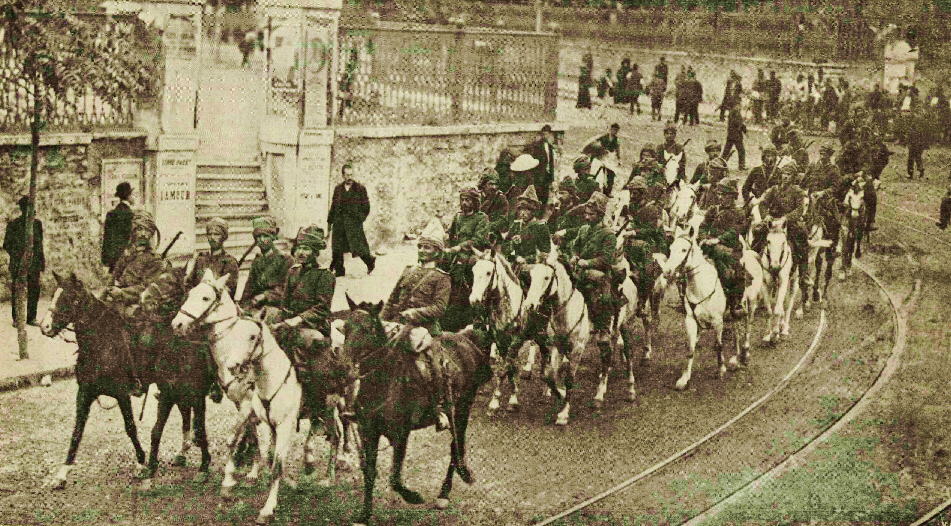
Turkish Cavalry Reoccupying Adrianople, July 1913
The Balkan allies received all Ottoman lands in Europe to the west of the Midia-Enos line and also Crete. They had to distribute
the acquisitions among themselves, and this crucial problem led to the disintegration of the Balkan league, with Bulgaria being especially angry. All the Balkan statesmen, armed with all possible kinds of arguments, claimed more and more territories. The "apple of discord" was Macedonia where the delimitation of frontiers proved to be an almost insoluble problem. While the partition was easier between Serbia and Greece, Bulgaria’s aspirations were horizontal and cut across the Greek and Serbian occupation zones. In the Balkan states, the opposition parties were extremely radical, pleading for a new war, this time against the former allies. The irredentist organizations threatened their own ministers with death if they were to agree to concessions. Despite this, the governments tried to reach demarcation agreements among the armies and in many respects were successful. The growing tension was
manifest in minor clashes and incidents between the allies.
On 19 May 1913 Greece and Serbia signed a pact of alliance and broad territorial arrangement. A Russian attempt to hold another conference of the Balkan prime ministers in Saint Petersburg to solve the territorial dispute was late and ineffective—another embarrassment to the Tsar. On 16 June 1913, King Ferdinand of Bulgaria ordered General Savov to attack the Serbian and Greek lines in Macedonia. This marked the start of the Second Balkan (Interallied) War. Greece, Serbia, and Montenegro declared war on Bulgaria and were backed by Romania. The Ottoman Empire also drove its armies against Bulgaria.
The Best Book
on the Balkan Wars
|
|
After more than a month of fierce battles, the Great Powers intervened again and stopped the military actions. The treaties of Bucharest and of Istanbul set the new territorial arrangement in Southeast Europe. Romania took South Dobrudja. Serbia acquired Kosovo, Novi Pazar and Vardar Macedonia. Greece received Epirus, Aegean Macedonia and Crete. Montenegro annexed a number of neighboring territories. Bulgaria took Pirin Macedonia and Western Thrace. The Ottoman Empire reacquired Eastern Thrace. Albania was proclaimed an independent country.
The Balkan Wars created a new situation in the peninsula. None of the countries was fully content with the new borders, although this discontent was stronger in the Ottoman Empire, Bulgaria and Albania. Greece demanded the Aegean islands, Serbia (soaring with success) aspired to an outlet to the sea and Bosnia and Herzegovina; Montenegro wanted Shkodra, while Romania was interested in Transylvania and Bessarabia. These aspirations shaped the policies of the Balkan States at the outbreak of World War I.
The war also solidified the attitudes of the great powers regarding the Balkans. Austria felt threatened by the Serbian successes and further ambitions. The Tsar resolved to more forcefully support his Slavic cousins in the future and the Kaiser resolved to support Austria-Hungary.
Source: The Center for Democracy and Reconciliation in Southern Europe
|
|

Flyers and application form for 2014 "Opening Moves" and
"Miracle of the Marne" Trips Now Available
(download pdf file here)

Click on Image to Send Email
|
|
|

|

Marcel Proust (1871-1922)
Author
In 1889, a regiment in Orléans inducted an enlistee who was possibly the unhealthiest specimen in the history of the French Army. Afflicted with asthma, coughing spells, sleep disorders, and neurologic or psychiatric maladies that are still speculated about six score years later. Marcel Proust, future author of the seven-volume In Search of Lost Time (formerly translated as Remembrance of Things Past), nonetheless found his service time fascinating. Despite being refused the privilege of re-enlisting after a year's service, he thought about military matters the rest of his life. Certain insights, like this, appear in sections of his masterwork, much of which was written during the Great War.
The soldier is convinced that a certain indefinitely extendable time period is accorded him before he is killed. . . .That is the amulet which preserves individuals — and sometimes populations — not from danger, but from the fear of danger, in reality from the belief in danger, which in some cases allows them to brave it without being brave.
|
|
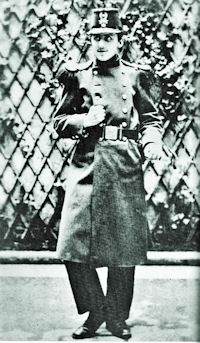
Proust, the Soldier
| |
As critic Joel Rich wrote, "Marcel Proust's life was led, one might say, between two martial 'bookends'." One of these bookends was the Franco-Prussian War during which he was born, and which probably influenced his decision to enlist. When his second military bookmark, the Great War, first appeared in 1914, the army remembered their former soldier. He was regularly summoned to Les Invalides for medical examinations to judge his fitness to serve. Of course, over a quarter century, his symptoms had only worsened and he failed every examination. This allowed him both to continue writing and to observe Paris at war. A scathing account of his city worked its way into the seventh volume of Lost Time. As another literary commentator remarked about this section: "There is a stark, embarrassing contrast between life in Paris and life at the front. . . .women wear jewelry made of artillery shells, a somewhat morbid means of showing their patriotism. . . .the absence of young men resulted in a new social dynamic."
Marcel Proust died of bronchial pneumonia in 1922 shortly after the publication of his novel's seventh volume.
|
Josef Stalin (1878-1953)
Revolutionary, Mass Murderer
Born in present-day Georgia to a housekeeper and a cobbler, Iosif Vissarionovich Dzhugashvili spent five years in a seminary, got himself expelled, and then became radicalized. His revolutionary/criminal activities drew the attention of the Okhrana by 1902, earning him the first of his seven exiles to Siberia. His last sojourn, covering the first three years of the war—about the time he adopted the name "Stalin" (=Man of Steel)— seemed to have excluded him from army service.
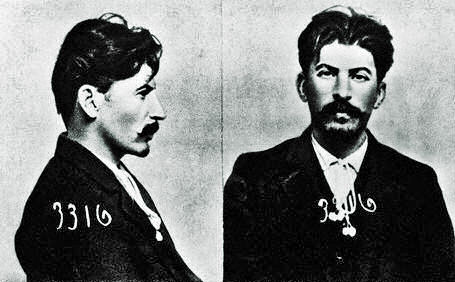
Stalin's Mug Shot
Scraping the bottom of the barrel for manpower as the fighting consumed millions of casualties, however, the Russian Army started culling the revolutionary exiles for conscription. In 1916, Stalin was called in for a medical examination but was deemed unfit for service due to his deformed left arm. Thus, somewhat ironically, the man who would prove to be the most ruthless warlord of the Second World War was kept on the sidelines when Russia was in peril due to inept leadership.
After the Tsar abdicated, Stalin made his way to Petrograd and resumed his career as a professional revolutionary. That story is probably better known to the reader.
|

All of the military chiefs of the United States maintain a list of recommended readings for their services. Here is a selection of World War I-related titles from those listings:
|
Wounded 14 times, stormtrooper Ernst Jünger survived to serve up one of the grittiest of all WWI memoirs in Storm of Steel.
|
|
The successes and disappointments surrounding one individual's effort at naval innovation: Sir John Fisher's Naval Revolution.
|
|
|
John Keegan's well-known The Face of Battle is an essential work for the library of everyone interested in military history.
|
|
The Blue Max is the first volume in Jack D. Hunter's trilogy of the German Air Service as seen through one cynical pilot's eyes. The USAF recommends the film, too.
|
|
|
Read how Pershing's army surmounted the learning curve of modern war while fighting in: The AEF Way of War: The American Army and Combat in World War I .
|
|
The story of the transfer of expertise from the Lafayette Escadrille to the U.S. Air Service is told in fascinating detail by Bert Frandsen in his 2003 work, Hat in the Ring: The Story of American Air Power in the Great War.
|
|
| Click Refresh/Reload If Book Covers Do Not Appear |
|

Tirailleurs Sénégalais on the Western Front
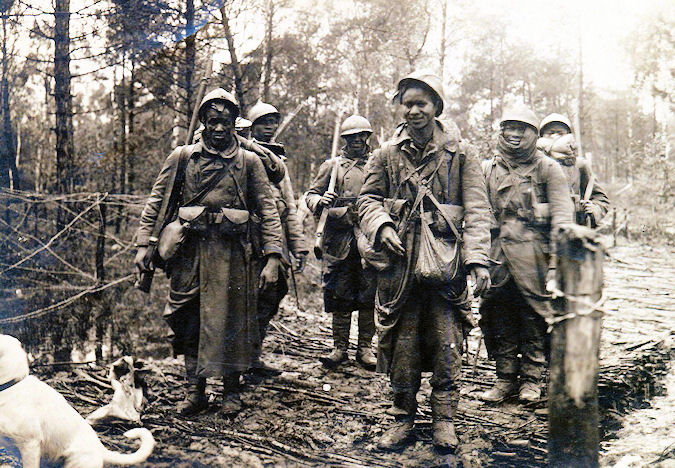
The Sénégalais were West African Colonial Army troops who fought for the French during World War I. They were an important source of manpower, fighting in all sectors from 1914 through the Armistice. In 1918 some of their formations fought alongside American units, winning their admiration.
Of 212,000 French Africans recruited during World War I, 163,000 served on the Western Front. Of these some 30,000 died for France. In 1918 alone 60,000 Africans joined the colors.
Sources: France at War Website and the University of Nebraska archives.
|
|
|

Battle of Riga
Where: The south and southeastern periphery of Riga, which is located at the south end of the Baltic Sea. (See map)
When: 1-5 September 1917
Attacking Force: German Eighth Army, commanded by General Oskar von Hutier
Opposing Forces: Russian Twelfth Army, commanded by General Vladislav N. Klembovski
|
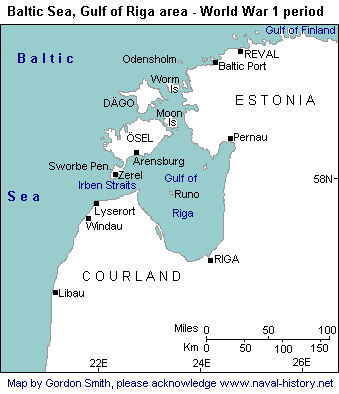 |
Memorable As: 1.) testing ground for the German infiltration and artillery techniques used at Caporetto and in the 1918 Western Front offensives, and 2.) the final full-scale battle between Russian and German forces on the Eastern Front.
The Story:
With the Russian Army slowly dissolving after the fiasco of the Kerensky (2nd Brusilov) Offensive, Ludendorff looked to the northern flank of his Eastern Front. The last effective Russian army, the Twelfth, which was deployed around Riga on the Baltic Coast, presented possibly the last threat to the German strategic position in the east. An advance along the coast would eliminate the danger and threaten Petrograd only 300 miles to the northeast. Another defeat could seriously undermine the Provisional Government as well.

Riga During the Great War
German tactics had evolved tremendously from 1914, with the eye on new methods to break the trench warfare stalemate. Infantry tactics has come to emphasize infiltration and shock rather than head-on attacking. These have been attributed historically to the Eighth Army commander Oskar von Hutier but are probably the product of many hands. Nevertheless, they were a prominent part of the German plan for Riga. In parallel with this, artillery methods were also evolving. Planning the brief but hurricane-like fire plan at Riga was Colonel Georg von Bruchmüler, the preeminent German artilleryman of the war.
The German attack was launched on 1 September 1917. A secondary attack along the coast threatened the city proper, while the main attack, mounted from the southeast by three divisions, forced the River Dvina and threatened to envelope the main Russian formations.

German Forces Occupy Riga
German forces quickly established a bridgehead over the river on the first day of the operation and quickly followed up the Russian retreat from the city on 2 September 1917. The Russian forces, though, were not pursued more than about 20 miles beyond the city.
A further operation allowed German forces to capture the major islands of the Baltic further, securing their flank against seaborne assault. The October Revolution soon followed and the German High Command's attention turned to the west, believing the decisive battles would be fought there in 1918.
Source: Baltic Defense Review.
|
|
|
Thanks to each and every one of you who has contributed material for this issue. Until July, your editor, Mike Hanlon. |
|
 (Or send it to a friend)
(Or send it to a friend)
|
Design by Shannon Niel
Content © Michael E. Hanlon
|
|
|







